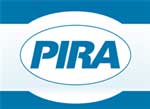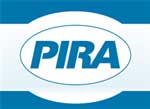 NYC-based PIRA Energy Group believes that Brent crude prices will continue to gradually strengthen for the next few months. In the U.S., commercial crude and product inventories both declined this past week. In Japan, crude runs decline while crude and product stocks rise. Specifically, PIRA’s analysis of the oil market fundamentals has revealed the following:
NYC-based PIRA Energy Group believes that Brent crude prices will continue to gradually strengthen for the next few months. In the U.S., commercial crude and product inventories both declined this past week. In Japan, crude runs decline while crude and product stocks rise. Specifically, PIRA’s analysis of the oil market fundamentals has revealed the following:
European Oil Market Forecast
Brent crude prices will continue to gradually strengthen for the next few months reflecting improving crude balances with higher refinery runs, increased shipments to Asia, flattening United States/non-OPEC crude production and rising geopolitical concerns. Refinery runs will ramp up as maintenance winds down, peaking in June-August in the Atlantic Basin.
First Major U.S. Stock Draw of 2015
U.S. commercial crude and product inventories both declined this past week. The strongest weekly product demand of the year combined with relatively low crude imports to push stocks lower. The year-on-year stock excess narrowed by 9 million barrels to 157 million barrels or to a still large 14.4%.
Japanese Crude Runs Decline, While Crude and Product Stocks Rise
Two weeks of data were released this past week covering the traditional May holiday period. Crude runs eased both weeks, while crude and finished product stocks rose both weeks. Gasoline demand was higher, while most other product demands eased. Kerosene stocks began to build seasonally. The indicative refining margin remains good, but it has been coming off its highs.
Asia-Pacific Oil Market Forecast
Oil balances are tightening. A global crude surplus has been built, but it is about to be reduced as runs continue to rise supported by healthy refining margins. The balances will be increasingly helped by slowing non-OPEC supply growth as 2015 plays out, and then outright year-on-year declines in non-OPEC supply as we move towards year-end. Over the summer, Middle East producers, particularly Saudi Arabia and Abu Dhabi, will have limited additional barrels for sale as new refineries continue their ramp up and increased summer burn absorbs supply. Strategic reserve purchases of crude oil in India and China will add to crude demand.
Energy Commodities Continue to Strengthen
On a weekly average basis the S&P 500 rose modestly, and closed at a record high on Friday. Emerging market debt prices fell slightly with higher yields. Bond yields on Greek debt eased modestly as a resolution to the Greek debt problem continues to be worked through. The total commodity index rose on the week, as did energy. The U.S. dollar has continued to weaken against many currencies with noted declines against the euro, British pound, and Russian ruble. The Shanghai Interbank Offer Rate eased for the tenth straight week. Bond yields for longer term maturities have risen in the U.S., Europe, Canada, UK and Japan. The Chinese policy interest rate (1-year banking lending rate) was cut again.
European LPG Imports Saturating Demand
Well supplied markets are facing limited incremental demand in Europe. Coaster sized lots of propane were called a significant $50/MT (13%) lower on the week near $320/MT while the spread to larger cargoes widened to $60, indicating that prices on the latter will face increasing pressure in the coming weeks. Large butane cargoes fell 7% to $399, while barges were little changed.
U.S. Ethanol Prices Higher
The rally in U.S. ethanol prices continued the week ending May 8 as many plants were shut down for spring maintenance. Higher petroleum values also provided support.
Ethanol Production Rebounds
U.S. ethanol production rebounded from a six-month low the week ending March 8 as several plants came back online following spring maintenance. Output rose to 912 MB/D from 887 MB/D in the previous week.
The information above is part of PIRA Energy Group's weekly Energy Market Recap - which alerts readers to PIRA’s current analysis of energy markets around the world as well as the key economic and political factors driving those markets.


 NYC-based
NYC-based  When the price of oil started its tumble late last fall so too did the oilfield services (OFS) market. The rig count in the U.S. has been halved compared to this time last year and operators are struggling across the board to cut costs in this low price environment. Some of the major U.S. shale plays are being hit harder than others, some will bounce back quickly while others may start to fade away.
When the price of oil started its tumble late last fall so too did the oilfield services (OFS) market. The rig count in the U.S. has been halved compared to this time last year and operators are struggling across the board to cut costs in this low price environment. Some of the major U.S. shale plays are being hit harder than others, some will bounce back quickly while others may start to fade away. NYC-based
NYC-based  When oil prices dramatically dropped in the fall of 2014, operators began to significantly alter their plans. As months passed, many thought service providers would gain clarity on the upstream situation and begin to develop their own strategic plans. However, as we have progressed toward mid-2015, as answers have been obtained, many new questions have arisen.
When oil prices dramatically dropped in the fall of 2014, operators began to significantly alter their plans. As months passed, many thought service providers would gain clarity on the upstream situation and begin to develop their own strategic plans. However, as we have progressed toward mid-2015, as answers have been obtained, many new questions have arisen.